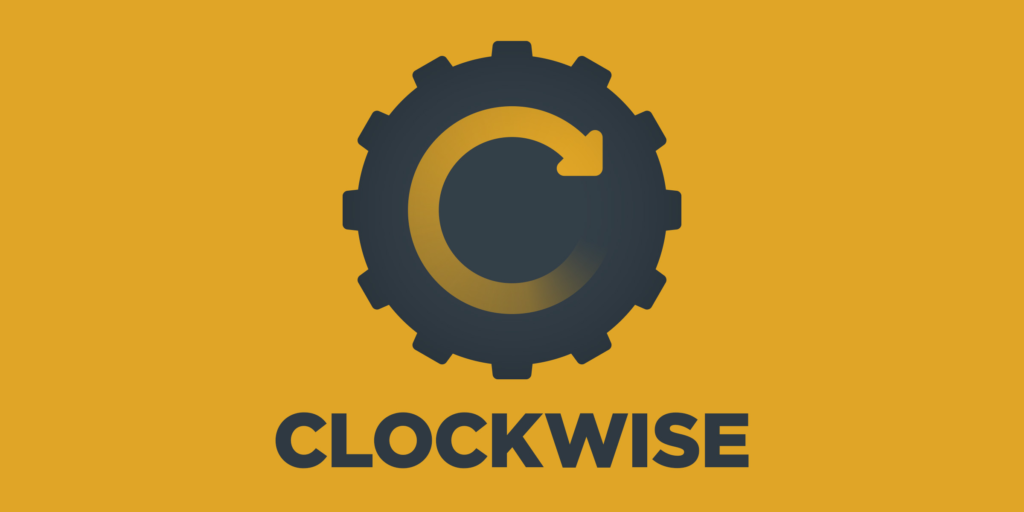Discussions on X, LinkedIn, YouTube. Also: Meet AI Engineers in person! Applications closing soon for attending and sponsoring AI Engineer Summit NYC, Feb 20-21.
The picks from all the speakers in our Best of 2024 series catches you up for 2024, but since we wrote about running Paper Clubs, we’ve been asked many times for a reading list to recommend for those starting from scratch at work or with friends. We started with the 2023 a16z Canon, but it needs a 2025 update and a practical focus.
Here we curate “required reads” for the AI engineer. Our design goals are:
-
pick ~50 papers (~one a week for a year), optional extras. Arbitrary constraint.
-
tell you why this paper matters instead of just name drop without helpful context
-
be very practical for the AI Engineer; no time wasted on Attention is All You Need, bc 1) everyone else already starts there, 2) most won’t really need it at work
We ended up picking 5 “papers” per section for:
-
GPT1, GPT2, GPT3, Codex, InstructGPT, GPT4 papers. Self explanatory. GPT3.5, 4o, o1, and o3 tended to have launch events and system cards instead.
-
Claude 3 and Gemini 1 papers to understand the competition. Latest iterations are Claude 3.5 Sonnet and Gemini 2.0 Flash/Flash Thinking. Also Gemma 2.
-
LLaMA 1, Llama 2, Llama 3 papers to understand the leading open models. You can also view Mistral 7B, Mixtral and Pixtral as a branch on the Llama family tree.
-
DeepSeek V1, Coder, MoE, V2, V3 papers. Leading (relatively) open model lab.
-
Apple Intelligence paper. It’s on every Mac and iPhone.
You can both use and learn a lot from other LLMs, this is a vast topic.
-
In particular, BERTs are underrated as workhorse classification models – see ModernBERT for the state of the art, and ColBERT for applications.
-
Honorable mentions of LLMs to know: AI2 (Olmo, Molmo, OlmOE, Tülu 3, Olmo 2), Grok, Amazon Nova, Yi, Reka, Jamba, Cohere, Nemotron, Microsoft Phi, HuggingFace SmolLM – mostly lower in ranking or lack papers.
-
Research to know: If time allows, we recommend the Scaling Laws literature: Kaplan, Chinchilla, Emergence / Mirage, Post-Chinchilla laws.
-
In 2025, the frontier (o1, o3, R1, QwQ/QVQ, f1) will be very much dominated by reasoning models, which have essentially no direct papers, but the basic knowledge is Let’s Verify Step By Step, STaR, and Noam Brown’s talks/podcasts. Most practical knowledge is accumulated by outsiders (LS talk) and tweets.
-
MMLU paper – the main knowledge benchmark, next to GPQA and BIG-Bench. In 2025 frontier labs use MMLU Pro, GPQA Diamond, and BIG-Bench Hard.
-
MuSR paper – evaluating long context, next to LongBench, BABILong, and RULER. Solving Lost in The Middle and other issues with Needle in a Haystack.
-
MATH paper – a compilation of math competition problems. Frontier labs focus on FrontierMath and hard subsets of MATH: MATH level 5, AIME, AMC10/AMC12.
-
IFEval paper – the leading instruction following eval and only external benchmark adopted by Apple. You could also view MT-Bench as a form of IF.
-
ARC AGI challenge – a famous abstract reasoning “IQ test” benchmark that has lasted far longer than many quickly saturated benchmarks.
We covered many of these in Benchmarks 101 and Benchmarks 201, while our Carlini, LMArena, and Braintrust episodes covered private, arena, and product evals (read LLM-as-Judge and the Applied LLMs essay). Benchmarks are linked to Datasets.
Note: The GPT3 paper (“Language Models are Few-Shot Learners”) should already have introduced In-Context Learning (ICL) – a close cousin of prompting. We also consider prompt injections required knowledge — Lilian Weng, Simon W.
-
The Prompt Report paper – a survey of prompting papers (podcast).
-
Chain-of-Thought paper – one of multiple claimants to popularizing Chain of Thought, along with Scratchpads and Let’s Think Step By Step
-
Tree of Thought paper – introducing lookaheads and backtracking (podcast)
-
Prompt Tuning paper – you may not need prompts – if you can do Prefix-Tuning, adjust decoding (say via entropy), or representation engineering
-
Automatic Prompt Engineering paper – it is increasingly obvious that humans are terrible zero-shot prompters and prompting itself can be enhanced by LLMs. The most notable implementation of this is in the DSPy paper/framework.
Section 3 is one area where reading disparate papers may not be as useful as having more practical guides – we recommend Lilian Weng, Eugene Yan, and Anthropic’s Prompt Engineering Tutorial and AI Engineer Workshop.
-
Introduction to Information Retrieval – a bit unfair to recommend a book, but we are trying to make the point that RAG is an IR problem and IR has a 60 year history that includes TF-IDF, BM25, FAISS, HNSW and other “boring” techniques.
-
2020 Meta RAG paper – which coined the term. The original authors have started Contextual and have coined RAG 2.0. Modern “table stakes” for RAG — HyDE, chunking, rerankers, multimodal data are better presented elsewhere.
-
MTEB: Massive Text Embedding Benchmark paper – the de-facto leader, with known issues. Many embeddings have papers – pick your poison – SentenceTransformers, OpenAI, Nomic Embed, Jina v3, cde-small-v1, ModernBERT Embed – with Matryoshka embeddings increasingly standard.
-
GraphRAG paper – Microsoft’s take on adding knowledge graphs to RAG, now open sourced. One of the most popular trends in RAG in 2024, alongside of ColBERT/ColPali/ColQwen (more in the Vision section).
-
RAGAS paper – the simple RAG eval recommended by OpenAI. See also Nvidia FACTS framework and Extrinsic Hallucinations in LLMs – Lilian Weng’s survey of causes/evals for hallucinations (see also Jason Wei on recall vs precision).
RAG is the bread and butter of AI Engineering at work in 2024, so there are a LOT of industry resources and practical experience you will be expected to have. LlamaIndex (course) and LangChain (video) have perhaps invested the most in educational resources. You should also be familiar with the perennial RAG vs Long Context debate.
-
SWE-Bench paper (our podcast) – after adoption by Anthropic, Devin and OpenAI, probably the highest profile agent benchmark today (vs WebArena or SWE-Gym). Technically a coding benchmark, but more a test of agents than raw LLMs. See also SWE-Agent, SWE-Bench Multimodal and the Konwinski Prize.
-
ReAct paper (our podcast) – ReAct started a long line of research on tool using and function calling LLMs, including Gorilla and the BFCL Leaderboard. Of historical interest – Toolformer and HuggingGPT.
-
MemGPT paper – one of many notable approaches to emulating long running agent memory, adopted by ChatGPT and LangGraph. Versions of these are reinvented in every agent system from MetaGPT to AutoGen to Smallville.
-
Voyager paper – Nvidia’s take on 3 cognitive architecture components (curriculum, skill library, sandbox) to improve performance. More abstractly, skill library/curriculum can be abstracted as a form of Agent Workflow Memory.
-
Anthropic on Building Effective Agents – just a great state-of-2024 recap that focuses on the importance of chaining, routing, parallelization, orchestration, evaluation, and optimization. See also Lilian Weng’s Agents (ex OpenAI), Shunyu Yao on LLM Agents (now at OpenAI) and Chip Huyen’s Agents.
We covered many of the 2024 SOTA agent designs at NeurIPS, and you can find more readings in the UC Berkeley LLM Agents MOOC. Note that we skipped bikeshedding agent definitions, but if you really need one, you could use mine.
-
The Stack paper – the original open dataset twin of The Pile focused on code, starting a great lineage of open codegen work from The Stack v2 to StarCoder.
-
Open Code Model papers – choose from DeepSeek-Coder, Qwen2.5-Coder, or CodeLlama. Many regard 3.5 Sonnet as the best code model but it has no paper.
-
HumanEval/Codex paper – This is a saturated benchmark, but is required knowledge for the code domain. SWE-Bench is more famous for coding now, but is expensive/evals agents rather than models. Modern replacements include Aider, Codeforces, BigCodeBench, LiveCodeBench and SciCode.
-
AlphaCodeium paper – Google published AlphaCode and AlphaCode2 which did very well on programming problems, but here is one way Flow Engineering can add a lot more performance to any given base model.
-
CriticGPT paper – LLMs are known to generate code that can have security issues. OpenAI trained CriticGPT to spot them, and Anthropic uses SAEs to identify LLM features that cause this, but it is a problem you should be aware of.
CodeGen is another field where much of the frontier has moved from research to industry and practical engineering advice on codegen and code agents like Devin are only found in industry blogposts and talks rather than research papers.
Much frontier VLM work these days is no longer published (the last we really got was GPT4V system card and derivative papers). We recommend having working experience with vision capabilities of 4o (including finetuning 4o vision), Claude 3.5 Sonnet/Haiku, Gemini 2.0 Flash, and o1. Others: Pixtral, Llama 3.2, Moondream, QVQ.
We do recommend diversifying from the big labs here for now – try Daily, Livekit, Vapi, Assembly, Deepgram, Fireworks, Cartesia, Elevenlabs etc. See the State of Voice 2024. While NotebookLM’s voice model is not public, we got the deepest description of the modeling process that we know of.
With Gemini 2.0 also being natively voice and vision multimodal, the Voice and Vision modalities are on a clear path to merging in 2025 and beyond.
We also highly recommend familiarity with ComfyUI (upcoming episode). Text Diffusion, Music Diffusion, and autoregressive image generation are niche but rising.
We recommend going thru the Unsloth notebooks and HuggingFace’s How to fine-tune open LLMs for more on the full process. This is obviously an endlessly deep rabbit hole that, at the extreme, overlaps with the Research Scientist track.
This list will seem intimidating and you will fall off the wagon a few times. Just get back on it. We’ll update with more thru 2025 to keep it current. You can make up your own approach but you can use our How To Read Papers In An Hour as a guide if that helps. Many folks also chimed in with advice here.
Did we miss anything obvious? It’s quite possible. Please comment below and we’ll update with credit to help the community.
Happy reading!
Thanks to Eugene Yan and Vibhu Sapra for great suggestions to this list.
Premium IPTV Experience with line4k
Experience the ultimate entertainment with our premium IPTV service. Watch your favorite channels, movies, and sports events in stunning 4K quality. Enjoy seamless streaming with zero buffering and access to over 10,000+ channels worldwide.
















